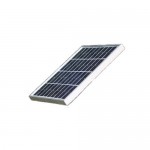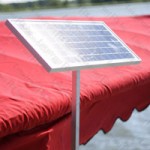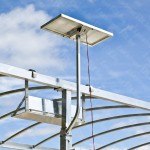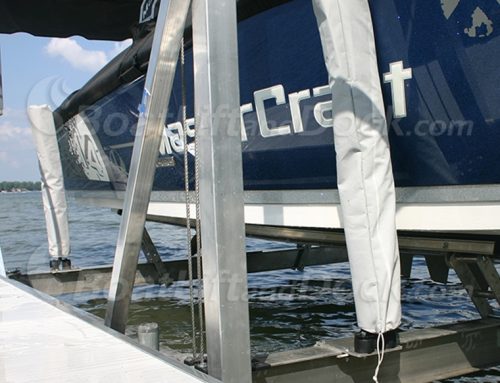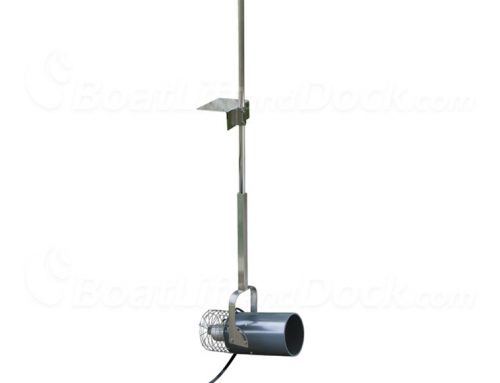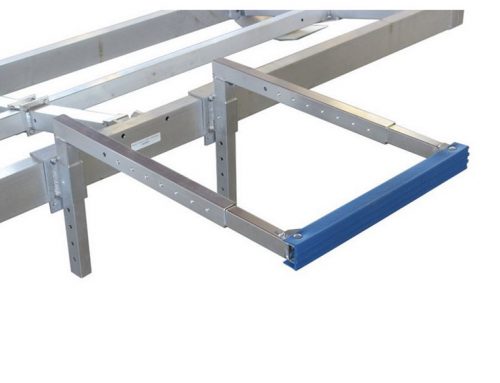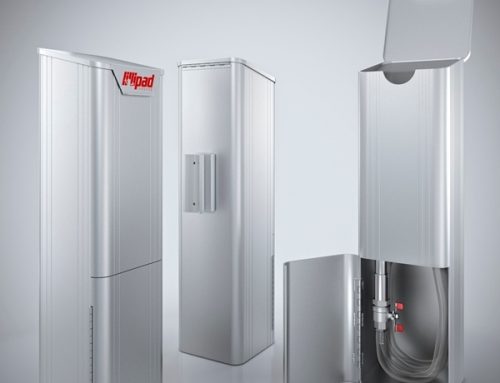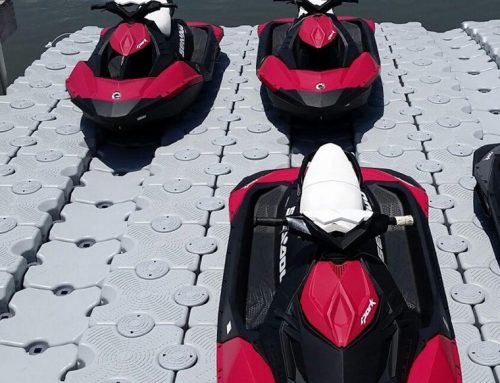When planning a solar charging set up for your boat lift there are a few things that you should know. These details may save you time and money, getting you the charging system you need and avoiding any potential damage to your battery or good time. In this article we will discuss the proper voltage and wattage for the solar panel you need, the different ways in which you can set up your battery array, and some conversions that can be made.
Solar Panel Wattage and output
Charging your batteries with a solar panel array requires that you get a large enough panel (watts) with the proper output (voltage) to properly, safely, and adequately charge your batteries. For the purposes of this discussion we will use a single battery system with a 10 watt/ 12volt solar panel charging a 12 Volt DC lift motor. To ensure that your battery is charged properly and therefore ready to power your lift motor when you need it to, you need to consider two things.
First, how often will you be using your lift, and secondly, do you, or should you have a regulator built into your system. The first question will determine how much power you are using and if your solar panel will be able to recharge the battery between uses. If you find that you are using the motor once a day then a 10watt solar panel with a 12vdc output should be sufficient. However, if you tend to use the lift several times a day, then you would be better off to go with a 20 watt kit with a 12v or 24v output depending on how many batteries you are using. It is key that the output voltage of your solar panel be adequate and in line with the voltage of your battery.
Solar Battery Array
If you feel that you need more power or a faster speed in operation of your 12 Volt lift motor, then you can expand you battery array from 12v to 24v by adding an additional battery. The best way that this conversion can be accomplished is to hook two batteries in series. A series connection, as will be detailed below, will increase your voltage from 12v to 24v but will not increase your amps, or the amount of electricity moving through the circuit; otherwise known as amp hours (A/H).
This setup will give your lift motor access to 24v of power, thus resulting in a faster lift speed; effectively doubling the rpm of the motor. The key to this setup is that there is not an increase in A/H, or current, and therefore no increase in the rate at which electricity is delivered to the motor. The extra speed comes from the extra voltage, not the A/H; your motor simply “sees” that it is connected to 24v as opposed to 12v. If you decide to attempt this conversion first ensure that your motor is designed to accommodate this increased voltage; if not you may end up burning the motor out.
Solar Regulator
If you connect a solar panel to your battery in order to keep it charged, it is important to include a solar regulator. The regulator will monitor and “regulate” the charging of the battery so that it will not be over charged, which can damage and/or decrease its overall life. Solar panels in the 20 Watt range do not necessarily need a regulator as the amount of work the panel will have to do to keep a 24v system fully charged is unlikely to lead to a situation in which the batteries get overcharged. This is true also for the 5 watt panels, whose low rate of charge on a standard 12v battery is unlikely to cause overcharging between uses.
Series Connection
To change a 12 volt deep cycle system into a 24v system you have to hook 2, 12 volt batteries in series, connecting the positive terminal of battery 1 to the negative terminal of battery 2. Then, hook the negative terminal of battery 1 to the positive terminal of battery 2; now you have a 24v system. To power the lift motor, you hook the positive lead to the positive terminal of battery 1 and the negative terminal to the negative terminal of battery 2. If you are intending on attaching a solar panel to charge your DC batteries, you will need to use a panel with a 24v output.
The leads of the solar panel are connected to the same terminals as the motor. When connecting two or more batteries together in a series array or bank, the batteries should have the same voltage, capacity, and chemical base to avoid any charging issues or one of the batteries discharging and charging at a different rate of the other(s). Any differences could lead to failure, inadequate charging, or an early death for your batteries.
Another essential point is to ensure that the output voltage of your solar panel is equal to that of your batteries. If you hook a 10W 12v solar panel to a 24v battery array, you will not see any increased charging capacity and in effect you will have cut the wattage of your solar panel in half. To get the most efficient and effective setup, you want a 20w/24v solar panel for a 24v battery array in series.
Links:
For a nice diagram of how a series connection looks you can visit this site.
© 2013 BoatLiftandDock.com


